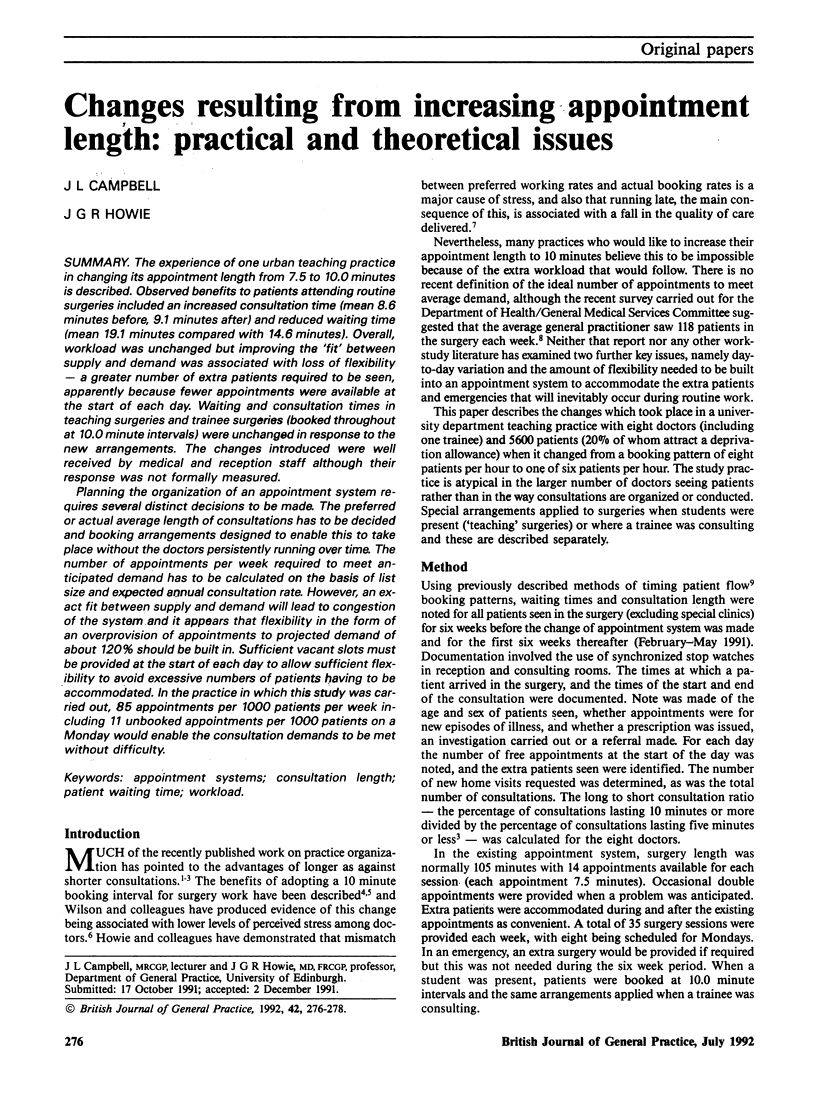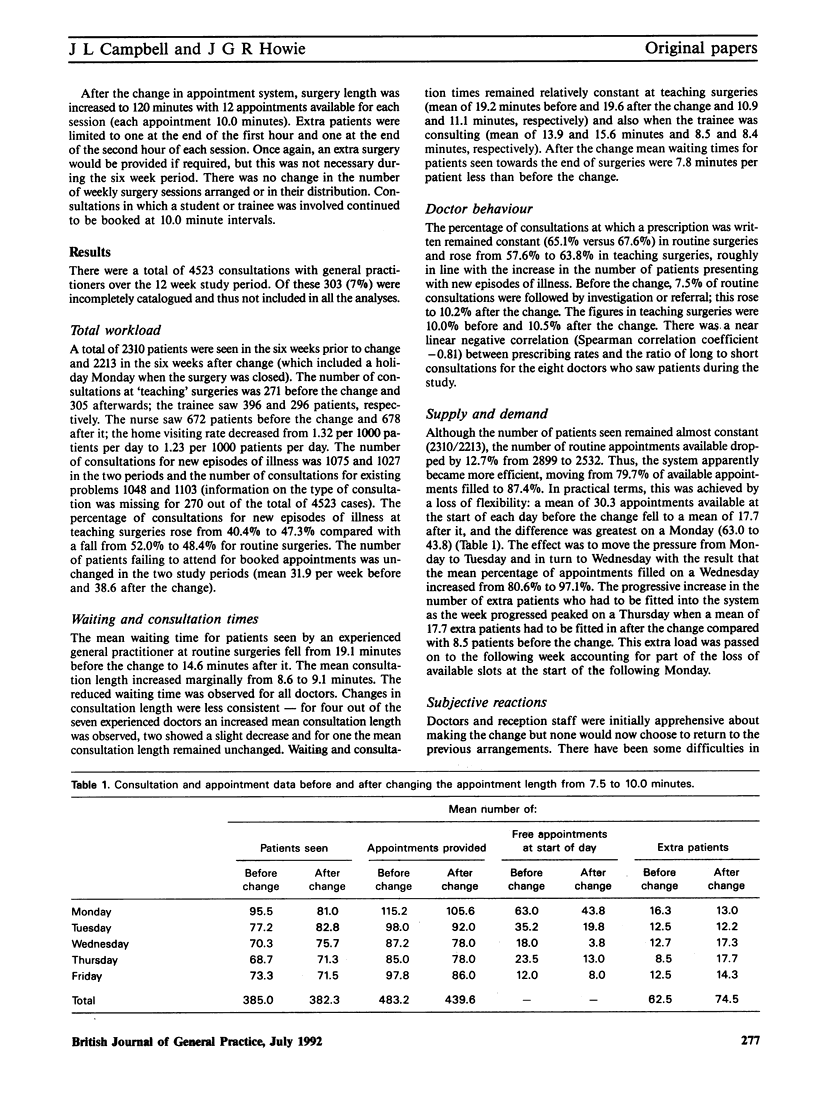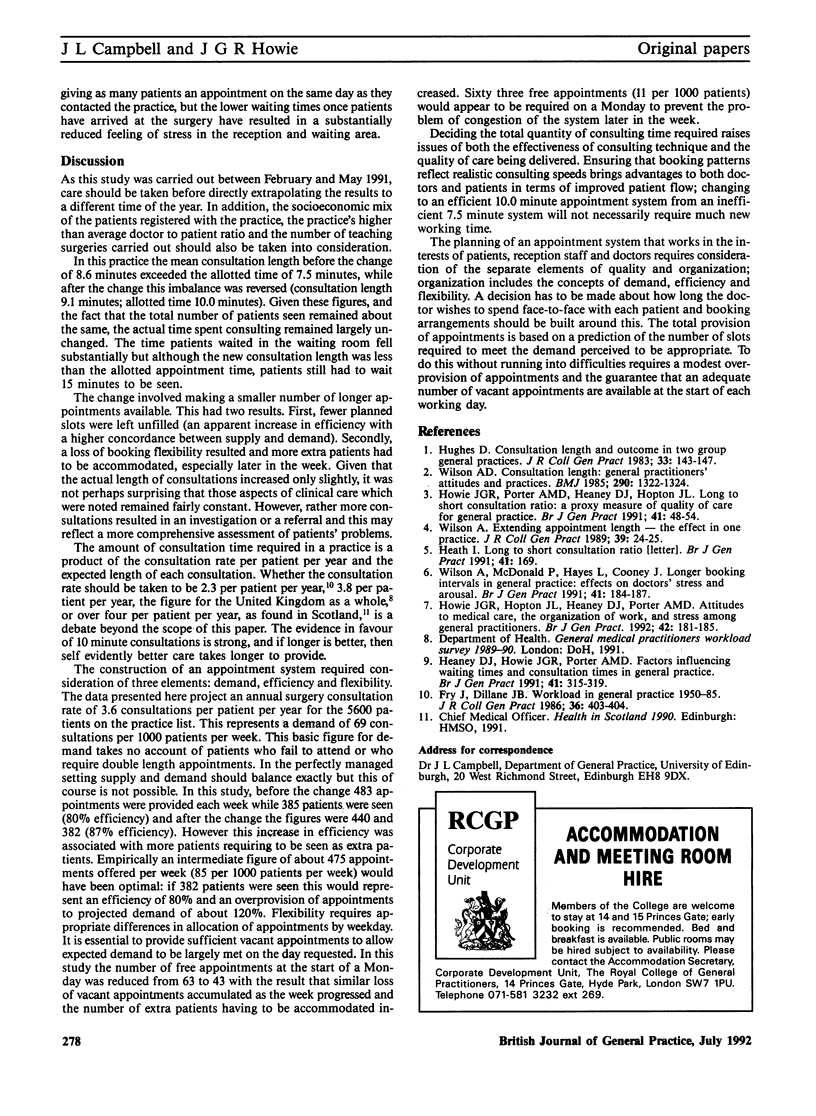Abstract
The experience of one urban teaching practice in changing its appointment length from 7.5 to 10.0 minutes is described. Observed benefits to patients attending routine surgeries included an increased consultation time (mean 8.6 minutes before, 9.1 minutes after) and reduced waiting time (mean 19.1 minutes compared with 14.6 minutes). Overall, workload was unchanged but improving the 'fit' between supply and demand was associated with loss of flexibility--a greater number of extra patients required to be seen, apparently because fewer appointments were available at the start of each day. Waiting and consultation times in teaching surgeries and trainee surgeries (booked throughout at 10.0 minute intervals) were unchanged in response to the new arrangements. The changes introduced were well received by medical and reception staff although their response was not formally measured. Planning the organization of an appointment system requires several distinct decisions to be made. The preferred or actual average length of consultations has to be decided and booking arrangements designed to enable this to take place without the doctors persistently running over time. The number of appointments per week required to meet anticipated demand has to be calculated on the basis of list size and expected annual consultation rate. However, an exact fit between supply and demand will lead to congestion of the system and it appears that flexibility in the form of an overprovision of appointments to projected demand of about 120% should be built in. Sufficient vacant slots must be provided at the start of each day to allow sufficient flexibility to avoid excessive numbers of patients having to be accommodated.(ABSTRACT TRUNCATED AT 250 WORDS)
Full text
PDF


Selected References
These references are in PubMed. This may not be the complete list of references from this article.
- Fry J., Dillane J. B. Workload in a general practice 1950-85. J R Coll Gen Pract. 1986 Sep;36(290):403–404. [PMC free article] [PubMed] [Google Scholar]
- Heaney D. J., Howie J. G., Porter A. M. Factors influencing waiting times and consultation times in general practice. Br J Gen Pract. 1991 Aug;41(349):315–319. [PMC free article] [PubMed] [Google Scholar]
- Howie J. G., Hopton J. L., Heaney D. J., Porter A. M. Attitudes to medical care, the organization of work, and stress among general practitioners. Br J Gen Pract. 1992 May;42(358):181–185. [PMC free article] [PubMed] [Google Scholar]
- Howie J. G., Porter A. M., Heaney D. J., Hopton J. L. Long to short consultation ratio: a proxy measure of quality of care for general practice. Br J Gen Pract. 1991 Feb;41(343):48–54. [PMC free article] [PubMed] [Google Scholar]
- Hughes D. Consultation length and outcome in two group general practices. J R Coll Gen Pract. 1983 Mar;33(248):143–147. [PMC free article] [PubMed] [Google Scholar]
- Long to short consultation ratios. Br J Gen Pract. 1991 Apr;41(345):169–170. [PMC free article] [PubMed] [Google Scholar]
- Wilson A. D. Consultation length: general practitioners' attitudes and practices. Br Med J (Clin Res Ed) 1985 May 4;290(6478):1322–1324. doi: 10.1136/bmj.290.6478.1322. [DOI] [PMC free article] [PubMed] [Google Scholar]
- Wilson A. Extending appointment length--the effect in one practice. J R Coll Gen Pract. 1989 Jan;39(318):24–25. [PMC free article] [PubMed] [Google Scholar]
- Wilson A., McDonald P., Hayes L., Cooney J. Longer booking intervals in general practice: effects on doctors' stress and arousal. Br J Gen Pract. 1991 May;41(346):184–187. [PMC free article] [PubMed] [Google Scholar]


